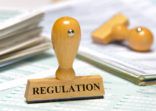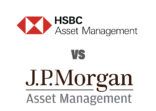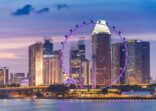As market volatility increases after a decade of relative stability, the Sharpe ratio can be a useful measurement for investors.
Developed by economist William Sharpe, the Sharpe ratio highlights how a fund has achieved returns. The higher the number, the more return the investor is getting per unit of risk. The lower the number, the more risk the investor takes on to earn additional returns.
Only 140 funds, or about 5% of all equity funds available in Hong Kong and Singapore had Sharpe ratios exceeding 1% (annualised) over three years, FE data shows.
Only two firms – JP Morgan and AB, each had five funds on the list of 140.
| Firm | Funds >1% Sharpe | Average Sharpe ratio |
| JP Morgan |
1.Emerging Markets Opportunities 2.US Growth 3.US Small Cap Growth 4.US Technology 5.Asia Growth |
1.19% |
| AB |
1.American Growth Portfolio 2.Concentrated US Equity Portfolio 3.FCP I – Sustainable US 4.Thematic Portfolio 5.International Technology Portfolio |
1.15% |
Source: FE. Annualised over the trailing three years. Data for actively-managed mutual funds only.
Firms with four funds exceeding 1% Sharpe ratio during the measured period are Blackrock, First State, Janus Henderson, Morgan Stanley, Pictet, Schroders, T Rowe Price and UBS.
Technology-focused funds are again appearing as top performers, as FSA noted earlier in a look at sectors with the best absolute and risk-adjusted returns.
Out of 140 Sharpe funds on the list, seven of the top ten are technology-focused.
Lowest Sharpe
During the measured period, 6% of all actively-managed equity funds available for sale in Hong Kong and Singapore had a Sharpe ratio of 0% or less.
Amundi, Invesco and Parvest had the most funds – seven each – with a Sharpe ratio equal to or less than 0%. Most of these were Europe-focused funds.
Axa, Blackrock and Fidelity had six funds each on the lowest Sharpe list.
Of the top ten lowest Sharpe ratio funds, three were single country funds focused on Turkey – from Manulife, Parvest and HSBC. Three others were volatility-focused funds.

















